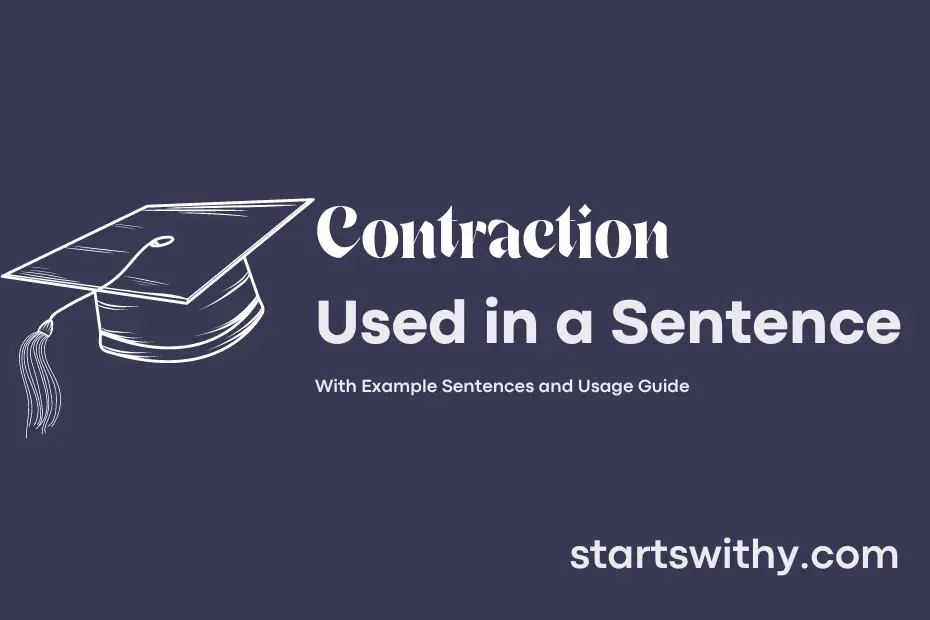Do you ever wonder why some words in English seem to be shortened and smooshed together? This linguistic phenomenon is known as a contraction.
A contraction occurs when two words are combined and some letters are omitted, often marked by an apostrophe. This shortening process commonly takes place in spoken language to make conversations flow more smoothly and efficiently.
7 Examples Of Contraction Used In a Sentence For Kids
- I can’t go to school today.
- We won’t play outside in the rain.
- She isn’t feeling well today.
- They don’t want to share their toys.
- He didn’t finish his homework last night.
- You shouldn’t eat too much candy.
- It won’t be easy to find the lost pencil.
14 Sentences with Contraction Examples
- Can’t you join us for the picnic tomorrow?
- I didn’t understand the lecture on quantum physics.
- She won’t be able to attend the seminar due to prior commitments.
- We shouldn’t procrastinate and start studying for our exams.
- They haven’t submitted their project report on time.
- The professor isn’t available for consultation during the weekend.
- It wouldn’t hurt to review the basic concepts before the quiz.
- I haven’t received any email updates about the campus event.
- I should’ve studied more for the last test.
- Aren’t you coming to the library with us to study?
- The students aren’t allowed to use mobile phones during the exam.
- You won’t believe the incredible research findings in the latest journal.
- We haven’t received the study materials for the upcoming workshop.
- She wouldn’t have missed the deadline if she had started working on the assignment earlier.
How To Use Contraction in Sentences?
Contraction is used in English to shorten words by combining two words into one. Here’s a guide on how to use contractions in a sentence:
-
Identifying Contractions: Contractions are formed by combining a pronoun, verb, and sometimes other words. For example, “they are” becomes “they’re” and “do not” becomes “don’t.”
-
Apostrophe Placement: The apostrophe is used to indicate where letters were removed to create the contraction. For example, “I am” becomes “I’m,” where the apostrophe replaces the letter “a.”
-
Casual and Informal Tone: Contractions are commonly used in spoken English and informal writing to sound casual and friendly. For example, “I can’t wait to see you” is more conversational than “I cannot wait to see you.”
-
Avoiding Overuse: While contractions are common in everyday language, it’s essential to use them appropriately. In formal writing, such as academic papers or professional emails, it’s best to use the full words instead of contractions.
-
Practice Makes Perfect: The more you practice using contractions in your writing and speech, the more natural it will become. Reading aloud can help you become more comfortable with using contractions.
By following these guidelines and practicing regularly, you can effectively incorporate contractions into your writing and speech to make your communication more conversational and engaging.
Conclusion
In conclusion, using contractions in sentences can help make writing less formal and more conversational. Contractions are a combination of words where apostrophes replace omitted letters, such as “can’t” for “cannot” or “they’re” for “they are”. This technique allows for a more relaxed tone in written communication, making it easier for readers to connect with the content.
By incorporating contractions into sentences, writers can enhance readability and engagement. They are commonly used in informal writing, dialogue, and everyday communication, providing a natural flow to the text. Contractions can help convey a more approachable and friendly tone, making complex information more accessible and relatable to a wider audience.



